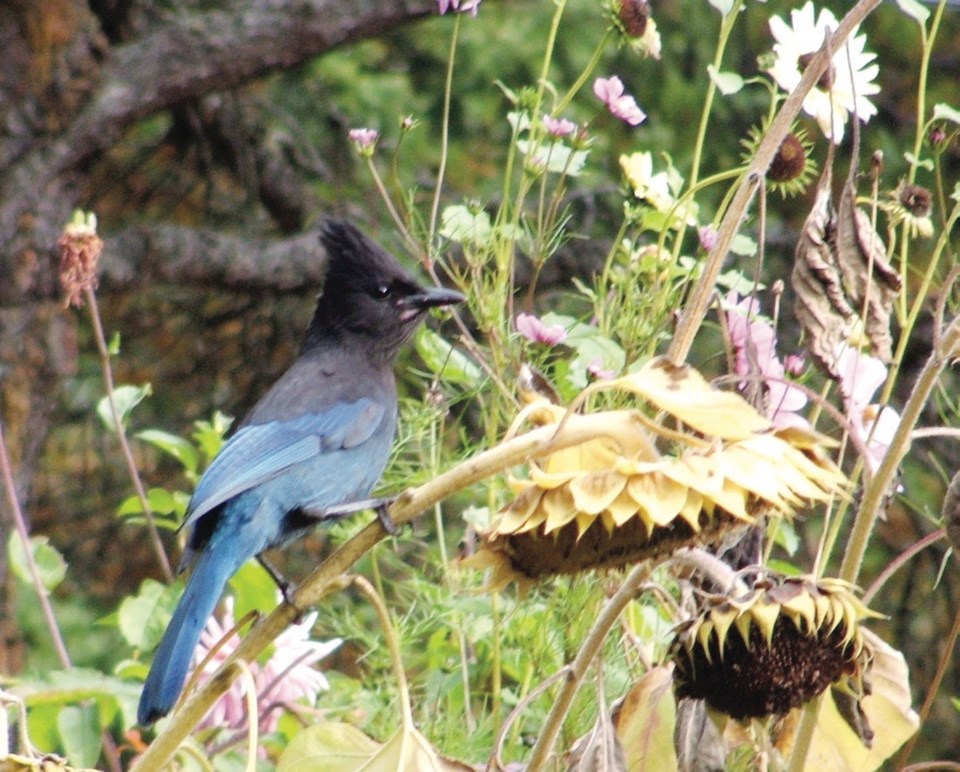Noisy exuberant Steller’s jays are zipping through capital region trees in higher-than-usual numbers this fall because of a shortage of food at higher elevations.
These deep-blue-coloured jays — B.C.’s official bird — are among a number of bird species which have been showing up in Greater Victoria in extra numbers.
An influx of jays started in early fall, said Ann Nightingale, of the Rocky Point Bird Observatory and past president of the Victoria Natural History Society.
“Definitely, there’s more than usual this year,” she said.
“Now the numbers seem to have levelled off a little bit and I think that may be in part because they’ve spread out more. But also, most of the birds that do come down to the coast, when we do have these irruptions [in populations], tend to be younger birds and they may not fare so well.”
Higher numbers often follow a good breeding season and a shortage of food, Nightingale said.
“So the adults, for the most part, tend to kick the youngsters to the curb.”
That sends hungry youngsters away from their home turf at higher elevations, such as the Malahat and the Sooke Hills.
“It’s a rough life being a bird. About 70 per cent of birds do not make it through their first winter,” Nightingale said.
After winter, survivors return their usual environment.
This is also a “banner year” locally for the northern saw-whet owl, Nightingale said. The Rocky Point Bird Observatory banded a record number of these little owls (they are about 18 to 21 centimetres long) this year. During a six-week period, a total of 1,848 owls were banded, more than double the typical number of about 800, she said.
Birders figure these high numbers again reflect a good year for reproduction, possibly combined with the impact of forest fires in B.C.’s Interior, which might have sent the forest owls in this direction. A banded bird from the Chilcotin was found here.
As well, sightings from throughout the capital region have been coming in of white-winged crossbills in the past two weeks. These colourful birds sport red bodies with white markings on dark wings. “We rarely see them on the southern part of the Island,” Nightingale said.
The crossbills, which could have flown from places such as northern B.C. and the Yukon, are likely on the hunt for food.
For the same reason, there may be a better than average chance of seeing snowy owls this winter, Nightingale said.
She is keen to see what birds are spotted during the region’s annual winter bird counts, starting Dec. 16. Novices are welcome to take part and will be teamed up with experienced birders.
If you decide to put out a bird feeder, Nightingale recommends trying to keep the food dry by having some kind of shelter over it. Make sure cats can not reach it. And position it either close to a window so a bird is unable to strike it if flying quickly, or at least four metres away from a window. Steller’s jays love nuts and seeds.
• For more information, go to christmasbirdcount.ca



